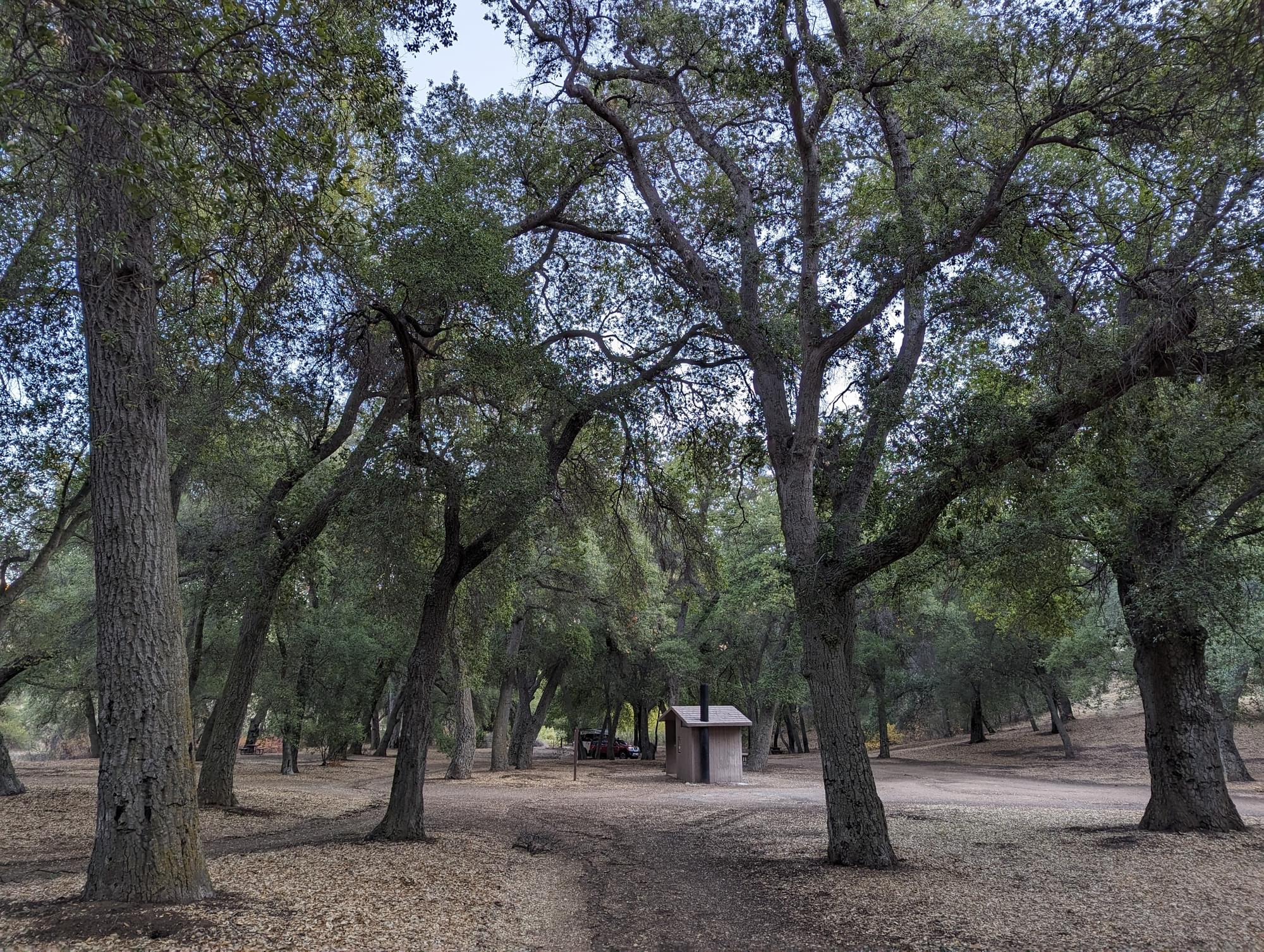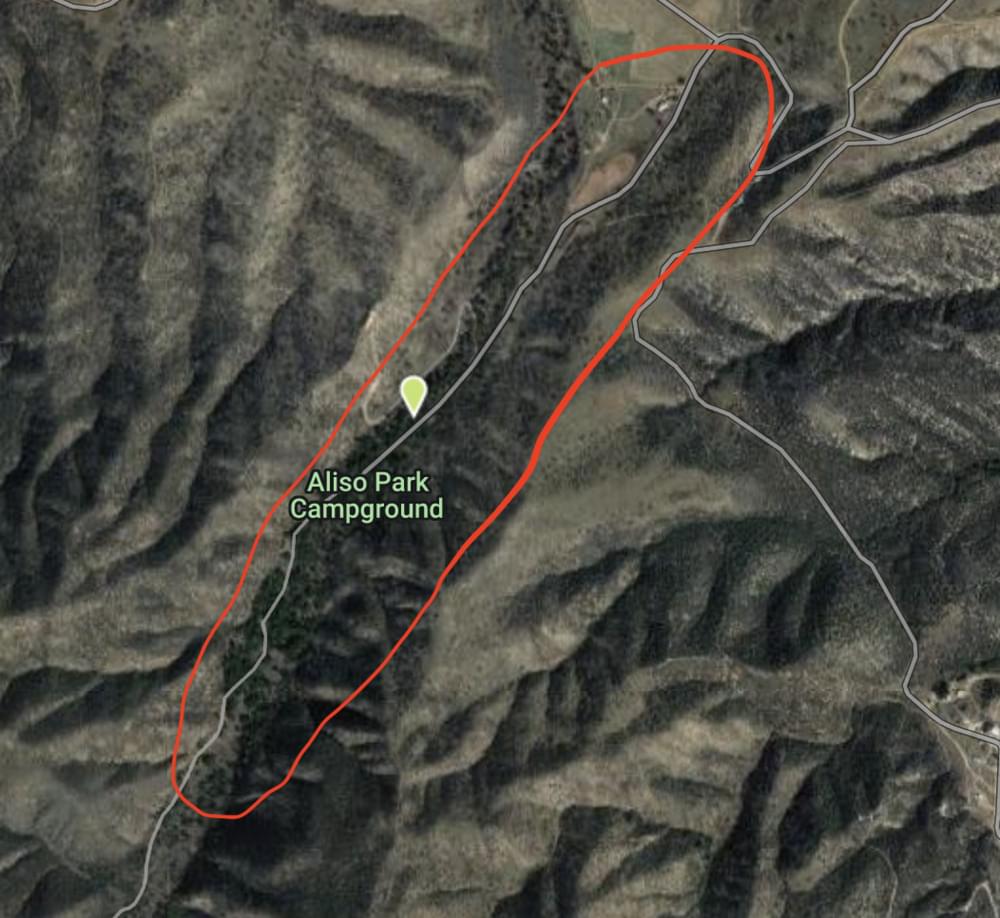Aliso Park

Tips for Birding
The best birding is within the campground as well as the first few hundred yards up the canyon. The campground has mature, tall oak and cottonwood forest, which gets shorter and eventually turns into chaparral further up the canyon. You can also walk down the road (ie, north), following the creekbed.
Birds of Interest
Woodland birds such as woodpeckers, sapsuckers, and several species of owl (Barn, Western Screech, Great Horned, and sometimes Long-eared). In winter and early spring often Varied Thrush. In spring and summer also Poorwills. Lawrence's Goldfinch is present year-round, and Pine Siskins are there during winter. Further up the canyon, Mountain Quail and Bell's Sparrow.
About this Location
Aliso Park Campground is for most of the year quiet, with only a handful of campers even on weekends. This can be different in fall during hunting season.
To the north, this hotspot abuts the Aliso Canyon Rd hotspot, which covers mostly open grassland. Use Aliso Park for the forest habitat north until the intersection of Foothill Road and Aliso Park Road. The canyon south of Aliso Park does not currently have its own hotspot but differs in habitat, being mostly chaparral.
The park is accessed via Aliso Canyon Road and Foothill Road, both of which are paved.
There is usually no cell phone service in the park, but a bit further north along the road.
About Cuyama Valley
See all hotspots at Cuyama Valley
Cuyama Valley offers a range of habitats, many of which are not found elsewhere in Santa Barbara County.
The valley itself has grasslands and croplands and can be birded from many roads such as Bell and Foothill Road, Aliso Canyon Road, Wasioja Road, and Cottonwood Canyon. This area has hundreds if not thousands of Horned Larks in winter, and the occasional longspur. Winter brings Ferruginous Hawks and Mountain Bluebirds. In spring, the valley becomes a stopover point for migrating Swainson's Hawks, with as many as 74 seen at one time! Note that most land in the valley is private, so do not venture beyond the roadside.
The canyons east of the valley offer desert habitat and species like Black-throated Sparrow, Bell's Sparrow, Black-chinned Sparrow, and Scott's Oriole. The best hotspot here is Ballinger Canyon. Nighthawks can be heard here in early spring mornings. Santa Barbara Canyon offers some of the same species, especially Bell's Sparrow and Scott's Oriole.
To the south of the valley are the foothills of the Sierra Madre. These can most easily be accessed at Aliso Park and Bates Canyon. Many songbirds breed here, including Cassin's Vireo and Black-throated Gray Warbler. Six owl species have been recorded here, and Common Poorwills are regular, especially in spring. The upper reaches of Bates Canyon have Brown Creeper and sometimes Golden-crowned Kinglets, and in the high-altitude chaparral, Bell's Sparrow and Black-chinned Sparrow.
A few ponds attract shorebirds and ducks, including New Cuyama Water Treatment Plant, Quatal Canyon, and what is referred to as the "nighthawk pond" on State Road 33. These also attract dozens of nighthawks in late summer, at dusk. Caliente Ranch Wetland is a natural depression on farmland, and attracts ducks and sometimes shorebirds when there is water (usually after the winter rains).
Since the valley is mostly tree-less, patches of trees attract passerines year-round, and particularly during migration. Check out Quatal Canyon, Richardson Park, and Santa Barbara Pistachio.
Dry Canyon has one of the few patches of Pinyon Pine in Santa Barbara County. A small patch of pine forest can also be found at Miranda Pine Campground.
The Cuyama Dairy attracts hundreds of blackbirds, often including Tricolored.
Features
Restrooms on site
Roadside viewing
Content from Linus Blomqvist and Linus Blomqvist
 Boundary of Aliso Park hotspot
Boundary of Aliso Park hotspot